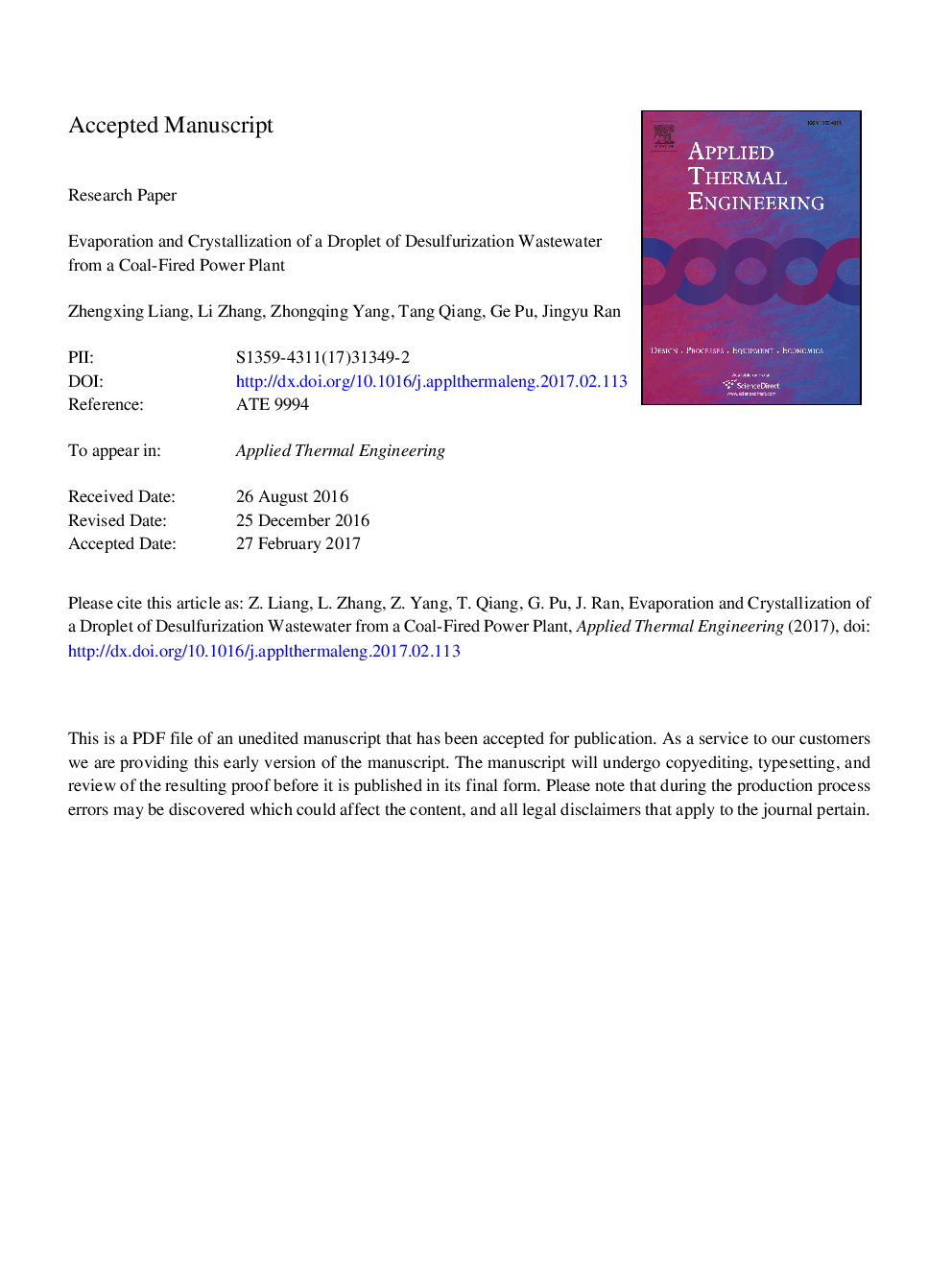| Article ID | Journal | Published Year | Pages | File Type |
|---|---|---|---|---|
| 4991267 | Applied Thermal Engineering | 2017 | 45 Pages |
Abstract
Relationship between evaporation and crystallization characteristics of a droplet of desulfurization wastewater from a coal-fired power plant and some operating conditions was studied experimentally using a thermogravimetric analyzer (TGA) with differential scanning calorimetry (DSC) function and a scanning electron microscope (SEM). The results shows that, between 15 °C/min and 45 °C/min, a higher temperature increasing rate leads to higher evaporation and crystallization rates. The increment in the evaporation rate, caused by the same increment of temperature increasing rate, is larger, when the temperature increasing rate is lower. In addition, the final temperatures, ranging from 90 °C to 150 °C, have little impact on the evaporation and crystallization rates of the 0.5 μL droplet. Ultimately, for the droplets, ranging from 0.2 μL to 2.5 μL, evaporation rate increases with increasing volumes of the droplets, but the crystallization rate decreases. From the SEM results, it can be observed that the quantity of cracks on the surface of the crystals also declines with the increase in volumes. Furthermore, the Stefan flow becomes a significant and unneglectable factor in order to decrease the evaporation rate at the end of the evaporation period.
Keywords
Related Topics
Physical Sciences and Engineering
Chemical Engineering
Fluid Flow and Transfer Processes
Authors
Zhengxing Liang, Li Zhang, Zhongqing Yang, Tang Qiang, Ge Pu, Jingyu Ran,
